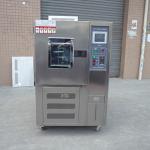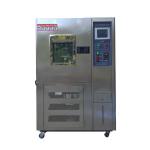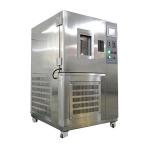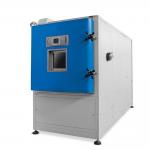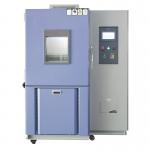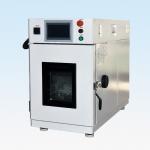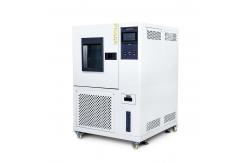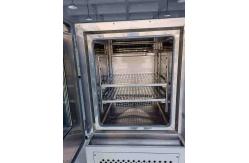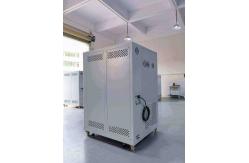In the modern era of technological advancements, the reliability
and durability of products under varying temperature conditions
have become crucial. The Linear and Nonlinear Rapid Temperature
Change Test Chamber emerges as a powerful tool, designed to meet
the stringent requirements of industries where temperature stress
testing is of utmost importance. This state-of-the-art test chamber is engineered to subject
products to rapid and extreme temperature changes, both in a linear
and nonlinear fashion. It serves a diverse range of industries,
including electronics, automotive, aerospace, and
telecommunications. The primary objective is to evaluate the
performance and integrity of products as they endure sudden shifts
in temperature, mimicking the harsh conditions they may encounter
during their lifecycle. By precisely controlling the rate of
temperature change and the temperature profiles, manufacturers can
identify potential weaknesses, optimize product designs, and ensure
compliance with industry standards. - Robust and Insulated Chamber Structure
- The test chamber is constructed with a heavy-duty steel frame and
insulated walls. The steel frame provides excellent structural
integrity, ensuring the chamber can withstand the rigors of
continuous temperature cycling. The insulation materials are
carefully selected to minimize heat transfer and maintain precise
temperature gradients within the chamber. The chamber is sealed
with high-quality gaskets and advanced sealing mechanisms to
prevent any air leakage, which could affect the accuracy of the
temperature control. The door is equipped with a reliable locking
system and a viewing window, allowing operators to monitor the test
process without disturbing the internal environment.
- Precision Temperature Control System
- The heart of the chamber lies in its advanced temperature control
system. It can achieve a wide temperature range, typically from
-70°C to +180°C, with an accuracy of ±0.3°C. The system offers both
linear and nonlinear temperature change profiles. In the linear
mode, the temperature can be ramped up or down at a constant rate,
which can be adjusted from 1°C per minute to 20°C per minute. In
the nonlinear mode, the temperature change can follow complex
curves, simulating more realistic and unpredictable temperature
fluctuations. The control system utilizes high-performance
refrigeration units, electric heaters, and intelligent controllers
to ensure accurate and stable temperature transitions. Temperature
sensors are strategically placed within the chamber to provide
real-time feedback, enabling the control system to make
instantaneous adjustments.
- High-Speed Air Circulation System
- To ensure uniform temperature distribution within the chamber, a
high-speed air circulation system is incorporated. The system
consists of powerful fans and carefully designed ductwork. The fans
can generate adjustable air velocities, typically ranging from 1
m/s to 5 m/s. The air circulation helps to eliminate temperature
gradients, ensuring that all parts of the test sample are exposed
to the same temperature conditions. This is crucial for obtaining
accurate and reliable test results, especially when testing large
or complex products.
- Intuitive Control Panel and Data Acquisition Interface
- The equipment is equipped with an intuitive control panel that
simplifies the operation and parameter setting. Operators can
easily select between linear and nonlinear temperature change
modes, set the temperature range, rate of change, and test duration
using the user-friendly interface. The control panel also provides
real-time displays of the current test conditions, as well as any
alarms or warnings. The chamber is integrated with a comprehensive
data acquisition system. It records all relevant test data, such as
temperature profiles, rate of temperature change, and any
observable changes in the test samples. The data can be stored in a
built-in memory or exported to external storage devices for further
analysis. The system can also generate detailed test reports in
various formats, facilitating easy documentation and sharing of
results.
- Versatile Sample Fixturing and Placement
- The interior of the chamber is designed to accommodate a wide
variety of sample sizes and shapes. It can be equipped with
adjustable racks, trays, and custom-made holders to ensure proper
positioning and exposure of the test samples. The sample fixturing
is made of materials that have low thermal conductivity and do not
contaminate the test environment. This flexibility allows for the
testing of different products, from small electronic components to
large automotive parts or aerospace assemblies. For example, a
printed circuit board can be mounted on a holder to test its
resistance to rapid temperature changes, while a car engine block
can be placed on a rack to evaluate its durability under extreme
thermal stress.
|
